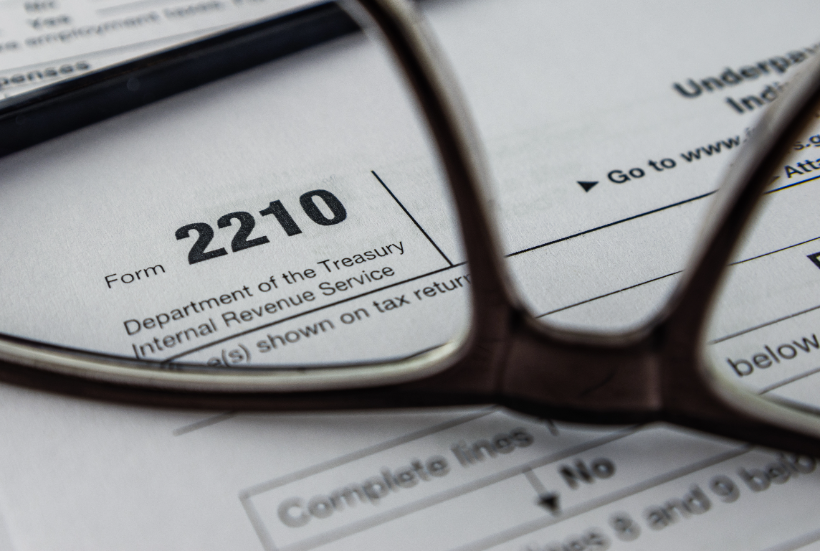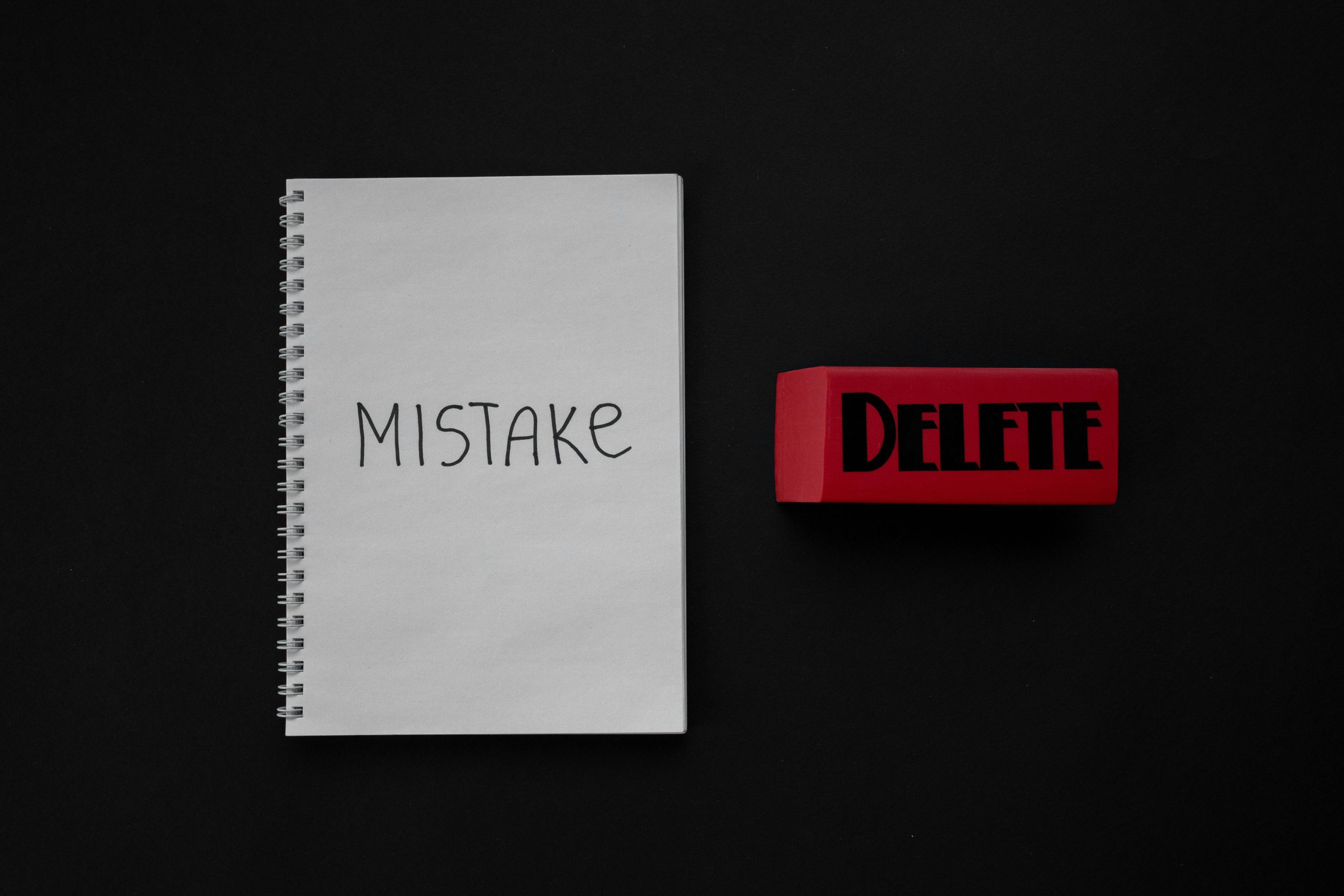
They’re not called “Guessimated” Tax Payments for a reason. Check your tax math!
If you find yourself owing taxes when you file your tax returns, you may be subject to an underpayment penalty. This penalty is designed to encourage accurate tax payments and to ensure that taxpayers meet their tax obligations throughout the year.
To calculate, report or request a waiver of this penalty, you will need to use Form 2210.
Form 2210, Underpayment of Estimated Tax by Individuals, Estates, and Trusts, helps taxpayers determine if they owe a penalty for underpayment of estimated taxes. An underpayment penalty may arise when your tax payments, including withholding and estimated tax payments, fall short of what you owe in federal income taxes.
Who is required to file Form 2210? Generally, individuals, estates, and trusts who owe an underpayment penalty for the tax year are required to complete this form. However, there are certain exceptions and special rules that may apply based on different sources of income, such as substantial income from farming or household employment taxes.
By accurately completing Form 2210, you can determine if you owe an underpayment penalty and take appropriate action to avoid unnecessary penalties and interest. Remember to consult a tax professional for specific guidance based on your individual circumstances.
Remember to file Form 2210 along with your federal income tax return if you are required to report an underpayment penalty.
Form 2210: The Form When You Haven’t Withheld Enough or Paid Enough Estimated Taxes
You may already be familiar with the underpayment penalty, a consequence of not withholding enough taxes or paying enough estimated taxes throughout the year. To accurately calculate and report this penalty, you’ll need to fill out Form 2210, titled “Underpayment of Estimated Tax by Individuals, Estates, and Trusts.” It’s specifically designed to help taxpayers determine if they owe a penalty for underpayment of estimated taxes for the current year taxes.
It is important to keep in mind that different rules and exceptions may apply based on your sources of income, such as income from farming or fishing, if they’re a high-income taxpayer, or if you’re a household employer and paying household employment taxes.
Who Usually Uses Form 2210?
If you’re a self-employed individual or have sources of income that are not subject to routine tax withholding, such as investment income, Form 2210 may be applicable to you. It’s commonly used by taxpayers who need to calculate any underpayment penalties that apply to their tax returns. If you’re an employee subject to federal income tax withholding, you probably have never even heard of this form. Business owners know that they have to pay taxes on regular income throughout the year, usually in quarterly payments instead of one annual payment. Of course, you can only claim your income credits, including refundable credits, when you file a return.
One of the most common reasons for filing Form 2210 is that an individual has underestimated how much that they owe, but they’ve been making timely payments of estimated taxes throughout the year. It’s not uncommon for income fluctuations to throw off your ability to qualify for certain refundable tax credits, which would increase the federal tax payment you owe.
On the other hand, you may have not had enough tax withheld from your paycheck throughout the year, only to find out that you have an additional income tax liability. In these cases, the form helps taxpayers determine if they owe any penalties for not paying enough taxes in a timely manner. It’s fine if you made timely payments, so long as you’ve made an accurate tax calculation when paying what you might owe on your federal income tax return.
For individuals like self-employed taxpayers or those with investment income, withholding is not automatically deducted from their payments. As a result, they need to calculate and pay their taxes separately, typically through estimated tax payments.
What Are the Penalties for Not Filing Form 2210?
If you are a self-employed individual or have income sources without routine tax withholding, it is important to understand the penalties for not filing Form 2210. Failure to file this form when required can result in various consequences and potential fees.
The penalties for not filing Form 2210 can be significant. The IRS may charge penalties for underpayment of taxes, which can be calculated using this form. These penalties can add up over time and increase your tax liability beyond your standard income taxes.
There are several circumstances in which taxpayers may be subject to penalties for not filing Form 2210. This includes not making estimated tax payments throughout the year or not having enough tax withheld from your paycheck. If you fall into these categories, it is crucial to understand the potential impact on your tax liability and the importance of filing Form 2210 to comply with tax payment rules.
How Does the IRS Calculate Tax Penalties?
If you are self-employed or have income sources without routine tax withholding, it’s crucial to understand the factors that go into the penalty calculation.
Penalties are determined based on various factors, including your income level, the applicable underpayment rate, and the number of days the underpayment occurred. The IRS uses a formula to calculate these penalties accurately.
To calculate the penalty amount, the IRS multiplies your underpayment by the underpayment rate. The underpayment rate is determined by the IRS and is regularly updated. It represents the interest rate that would be charged if the underpayment were a loan.
The penalty amount is then prorated based on the number of days the underpayment occurred. This ensures that taxpayers are not penalized for the entire year if the underpayment only happened for a portion of the year.
Is There a Difference between Underpayment and Late Payment Penalties?
When it comes to tax penalties, underpayment penalties are imposed when you fail to make sufficient quarterly tax payments throughout the year. The IRS requires taxpayers to estimate their tax liability and make quarterly payments accordingly. If you miss any of these payments or your estimated payments are too low, you may face an underpayment penalty, even if you’re making the payment within the 12-month period.
Late payment penalties, on the other hand, are applied when you fail to pay your total tax liability by the due date. Late penalties are calculated based on the amount you owe on your individual income tax return and the number of days you are late in paying it.
It’s important to note that there are exemptions to the underpayment penalty. If you can demonstrate that you are experiencing financial hardship or if you are in a federally declared natural disaster area, you may qualify for penalty relief. In these cases, you would still need to pay your tax liability, but you would not face additional penalties for underpayment.
Completing Form 2210
Completing Form 2210 is essential for taxpayers who want to avoid underpayment penalties and accurately calculate their tax liability. This form helps individuals assess whether they owe any additional federal income taxes for underpaid amounts or if they qualify for any penalty waivers. When filling out Form 2210, taxpayers will need to provide information about their income, deductions, and taxes paid throughout the year. By carefully completing this form, taxpayers can ensure they are meeting their tax obligations and avoid any unnecessary penalties.
Where Can I Find Instructions for Filing Form 2210?
When it comes to filing your taxes, it’s important to understand the various forms and instructions that are required. For those who may need to file Form 2210 – Underpayment of Estimated Tax by Individuals, Estates, and Trusts, it’s important to know where to find the instructions to ensure accurate and timely filing.
There are several sources where you can find instructions for filing Form 2210. The first and most reliable resource is the official IRS website. The IRS provides detailed instructions and forms for all types of tax filings, including Form 2210. You can visit the IRS website and search for “Form 2210 instructions” to find the official instructions.
In addition to the IRS website, you can also find instructions in various IRS publications. These publications are available both online and in print, and they provide valuable guidance and explanations for different tax forms and processes.
Tax professionals and tax preparation software are also excellent resources for finding instructions for Form 2210. Tax professionals, such as enrolled agents or certified public accountants, have expertise in tax laws and can guide you through the process of filing your taxes, including Form 2210.
What Information Do I Need to Complete Form 2210?
When it comes to filing Form 2210 – Underpayment of Estimated Tax by Individuals, Estates, and Trusts, it’s crucial to have the necessary information at hand. Here is a list of the key details you will need to answer questions from Form 2210 and ensure accurate filing:
- Personal Information: Provide your full name, Social Security number, and mailing address. If you are filing a joint return with your spouse, you will also need their information. You may also need to include any tax credits or deductions from your income tax returns, including premium tax credit payments sent to your insurance provider.
- Filing Status: Indicate your filing status, such as single, married filing jointly, married filing separately, head of household, or qualifying widow(er) with dependent child.
- Income Details: Include all sources of income for the tax year, such as wages, self-employment income, investment income, and income from farming. Calculate your taxable income.
- Estimated Tax Payments: Report any estimated tax payments made throughout the year. This includes quarterly tax payments and any other relevant tax payments.
- Penalty Waivers: If you are claiming any automatic underpayment penalty waivers, provide the necessary documentation to support your claim. Certain circumstances, such as retirement, disability, or a federally declared natural disaster, may qualify you for a penalty waiver. Checking the right box is all you need to do if you’re asking the IRS to waive the entire penalty.
Who Would Qualify to Have the Underpayment Penalty Waived?
If you are worried about facing an underpayment penalty for your tax returns, there are circumstances under which you may qualify to have this penalty waived. The Internal Revenue Service (IRS) understands that there are certain situations that may prevent taxpayers from meeting their tax payment obligations. Let’s take a closer look at some of the circumstances that could help you qualify for an underpayment penalty waiver.
First, if you are age 62 or older or if you are retired (and your previous employment was due to your employer’s requirement), you may have reasonable cause to have the underpayment penalty waived. Similarly, if you are unable to manage your financial affairs due to a disability or loss of mental control or physical control, you may also qualify for a waiver.
In addition, there are specific circumstances known as unusual events that can provide a basis for an underpayment penalty waiver. These events include serious illness, loss of income, natural disasters, domestic violence situations, and federally declared disasters.
It is important to note that each situation is evaluated on a case-by-case basis, and you will need to provide documentation supporting your claim of reasonable cause or financial hardship. If you believe you meet the criteria for an underpayment penalty waiver, consult with a tax professional to determine the best course of action and ensure that you comply with all necessary requirements.
How Do I Calculate My Annualized Income Installment Method (AIM) Payments with Form 2210?
To calculate your annualized income installment method (AIM) payments with Form 2210, you will need to follow a specific process. The AIM method helps taxpayers who have income that fluctuates throughout the year to avoid underpayment penalties. Here’s how:
- Determine your income for each quarter: Calculate the income you received in each quarter of the tax year. This includes wages, self-employment income, investment income, and income from farming.
- Annualize your income: Multiply the income from each quarter by the number of days in the tax year and divide it by the number of days in that quarter. This will give you the annualized income for each quarter.
- Calculate your total annualized income: Add up the annualized income amounts for each quarter to get your total annualized income.
- Determine your estimated tax liability: Estimate your total tax liability for the year based on your income and applicable tax rates.
- Determine your quarterly estimated tax payments: Divide your estimated tax liability by four to get your quarterly estimated tax payments.
- Compare your estimated tax payments with your annualized income: Subtract your quarterly estimated tax payments from your annualized income for each quarter. If the difference is negative, you may owe additional estimated tax payments and you’re looking at the actual penalty.
It’s important to note that taxpayers who use the AIM method are required to complete Form 2210 manually, as the form does not automatically calculate the AIM payments. However, the IRS provides instructions and a flow chart in Publication 505 to assist taxpayers in calculating their AIM payments accurately.
In addition to the AIM method, Form 2210 also provides options to calculate penalties using the short method or the regular method. The short method uses a fixed percentage of the annualized income, while the regular method calculates penalties based on the actual income received and the due dates of the quarterly payments.

Markos Banos
Markos M. Baños Cabán, Esq., is the Director of Resolutions at Community Tax LLC, where he leads a team of practitioners and service professionals dedicated to resolving complex tax conflicts, including IRS audits, tax liens, and tax debt. A licensed attorney, tax practitioner, and notary public in Puerto Rico, Markos combines his extensive legal expertise and management skills to deliver exceptional results and reduce stress for his clients. He holds a Juris Doctor from the University of Puerto Rico School of Law and has experience in a variety of legal fields, as well as industrial management. Bilingual in English and Spanish, Markos is also a published researcher with a passion for delivering outstanding service.







